Qiu Zhao, Yang Du, Wenping Cai, Ming Yang,Rui Dong
(College of Civil Engineering, Fuzhou University, Fuzhou 350108, China)
Abstract:
To alleviate deck fatigue failure and regular pavement damage, which are congenital deficiencies of highway steel bridge deck structure, this paper proposes a new type of composite bridge deck, consisting of steel tubular connectors and steel-reactive powder concrete (RPC). Push-out tests were conducted to study the new deck's shear performance. During the experimental process, specimens were divided into two groups which are composed of steel tubular connectors with or without penetrative bars set in. Then, researchers analyzed destroyed models and mechanisms of the composite structure under shear forces. Results showed that test models in two groups, once destroyed, displayed similar shear fracture, which appeared on the lower margin of the steel tubular wall along the welds. Meanwhile, RPC under the connector, for varied tests, was crushed at the same stage, although the large shear and bending deformation just occurred on connectors with penetrative bars. Additionally, shear capacity of specimens with penetrative bars, compared with the ones without bars, unexpectedly decreased by 20%, but the structural ductility was 1.75 times as much, and the ductility coefficients of specimens were all larger than 3.5, demonstrating certain deformation capacity.
Key words: composite bridge deck push-out tests RPC steel tubular connectors failure mode
DOI:10.11916/j.issn.1005-9113.18026
Clc Number:TU997
Fund:
Qiu Zhao, Yang Du, Wenping Cai, Ming Yang, Rui Dong. Experimental Study on Shear Behavior of New-Type Steel-Concrete Composite Bridge Deck[J]. Journal of Harbin Institute of Technology (New Series), 2018, 25(6): 66-77. DOI: 10.11916/j.issn.1005-9113.18026.

Fund Sponsored by the National Natural Science Foundation of China (Grant No.51478120) Corresponding author Yang Du, E-mail: 2419443263@qq.com Article history Received: 2018-03-13
Contents Abstract Full text Figures/Tables PDF
Experimental Study on Shear Behavior of New-Type Steel-Concrete Composite Bridge Deck
Qiu Zhao, Yang Du

 , Wenping Cai, Ming Yang, Rui Dong
, Wenping Cai, Ming Yang, Rui Dong College of Civil Engineering, Fuzhou University, Fuzhou 350108, China
Received: 2018-03-13
Fund: Sponsored by the National Natural Science Foundation of China (Grant No.51478120)
Corresponding author: Yang Du, E-mail: 2419443263@qq.com
Abstract: To alleviate deck fatigue failure and regular pavement damage, which are congenital deficiencies of highway steel bridge deck structure, this paper proposes a new type of composite bridge deck, consisting of steel tubular connectors and steel-reactive powder concrete (RPC). Push-out tests were conducted to study the new deck's shear performance. During the experimental process, specimens were divided into two groups which are composed of steel tubular connectors with or without penetrative bars set in. Then, researchers analyzed destroyed models and mechanisms of the composite structure under shear forces. Results showed that test models in two groups, once destroyed, displayed similar shear fracture, which appeared on the lower margin of the steel tubular wall along the welds. Meanwhile, RPC under the connector, for varied tests, was crushed at the same stage, although the large shear and bending deformation just occurred on connectors with penetrative bars. Additionally, shear capacity of specimens with penetrative bars, compared with the ones without bars, unexpectedly decreased by 20%, but the structural ductility was 1.75 times as much, and the ductility coefficients of specimens were all larger than 3.5, demonstrating certain deformation capacity.
Key words: composite bridge deck push-out tests RPC steel tubular connectors failure mode
1 Introduction Steel bridge deck pavements used in China are usually composed of several flexible materials, such as bituminous concrete and improved stone mastic asphalt[1]. However, the nature of these materials means the surface of the deck often becomes deformed with vehicle loads passing over it, making the pavement unable to satisfy the functional demand of the steel deck, thus leading to further cracking, rutting, upheaval and other issues at the paving layer. Orthotropic steel bridge deck is among the ones that are susceptible to such damage because it may generate large stress amplitudes, which will easily introduce fatigue cracking into the main infrastructure of the bridge deck. Stress concentration, damage to the steel deck pavement, and fatigue cracks of the orthotropic steel bridge deck are all caused by a lack of sufficient stiffness in the deck structure. If this defect is eliminated, other problems as mentioned above can be solved as well. Inspired by research and application of composite structures, scholars at home and abroad have begun to apply composite slabs in bridge construction to improve the stiffness of bridge decks, thereby reducing the stress amplitude of the structure and improve working environment around the pavement of bridge deck[2]. However, the thicker concrete layer in the composite bridge deck increases the structural weight of the bridge, offsetting the advantages. To alleviate the corresponding problem, scholars have suggested the application of lightweight aggregate high-strength concrete[3], steel fiber reinforced concrete[4], high-performance concrete[5], RPC[6-7] and other materials[8-10] to the layer of composite bridge structure.
RPC is a kind of high-performance fiber reinforced cement composite material that has superior compressive strength, high modulus, and excellent ductility[11]. Structural tensile capacity of the RPC layer can be further enhanced by being incorporated with a certain volume of steel fibers and steel mesh reinforcement. For the lower layer of the asphalt pavement, using cement-based materials will greatly improve the interfacial mechanical properties of the asphalt and reduce its thickness. RPC has a large density and low permeability coefficient, which is manifested in the fact that moisture is unable to enter the adhesive layer, thus keeping the steel bridge deck in a good corrosion-resistant state without relying on an additional waterproof method. Compared with conventional composite deck, the RPC layer on the composite bridge has an evidently smaller thickness. When replacing part of the flexible pavement, there is only a little or no increase in its weight. Therefore, RPC is an ideal material for a composite structure. Nevertheless, the connection method, which effectively promotes the working together of the thin RPC layer and steel deck, is still a critical issue that requires further research.
2 New Composite Bridge Deck Structure For the composite steel bridge deck in great coordination with RPC, the shear connector is a critical factor, which not only resists shear forces between the steel deck and concrete slab, but also combines the steel plate with the RPC board to restrict interfacial lifting[12-13]. Owing to the superior mechanical performance of RPC, the deck thickness of a composite bridge tends to be much thinner (4-6 mm). However, removing the protective layer of studs will make shear connectors too short to provide a sufficient pulling force, thereby reducing the efficiency and durability of the composite bridge deck. Eurocode 4[14] demands that the overall height-diameter ratio of a stud should not be less than 3, which is difficult to achieve due to the ultra-thin RPC plate.
In view of the influence factors above, this paper proposes a new type of shear connector that can be integrated with the ultra-thin RPC board to improve interfacial shear and pulling forces. A new type of steel-RPC composite bridge structure is shown in Fig. 1, and a kind of horn-shaped welding is usually adopted at the steel tubular outer wall and bridge deck. In order to meet thickness requirements for the protective layer, as specified in codes, transverse reinforcement bars, with longitudinal reinforcement bars tied together to construct the steel mesh, were inserted into tubes. The structural working mechanism is the dowel action between the RPC in the tube and penetrative bars so as to efficiently resist shear and tensile forces at the interface. Depending on the small thickness of the steel tubular sidewall, penetrative bars in the short tubular connectors can be arranged near the top surface of RPC at utmost, which makes the most of steel mesh reinforcement in concrete.
Fig.1
 Fig.1 Composite bridge deck structure
Fig.1 Composite bridge deck structure 3 Experimental Scheme As a connection part of the composite deck slab, meeting shear requirements is a prerequisite for steel tubular connectors. At present, measurement methods used frequently for shear properties of connectors are push-out or beam model tests. The push-out test result is easier to operate and its result is safer, which makes it a common test method for the study on shear connectors. Therefore, this paper applies this method to the test of steel tubular connectors to explore the shear performance of a steel-RPC composite deck.
3.1 Specimen Design Considered as a main variable, steel bars were used in steel tubular connectors of the composite deck, and connectors were filled with RPC. Divided into two groups, shearing tests contain specimens with penetrative bars that were numbered T-R-i (i=1, 2, 3), and specimens without bars were numbered T-i (i=1, 2, 3). Push-out test specimens were designed to conform to Eurocode 4[14]and have been adjusted according to actual circumstances. Specimen dimensions are shown in Fig. 2. The joist steel of specimens was made of three Q345 steel sheets of 14 mm in thickness by welding, combined with the RPC board which is 60 mm thick. To satisfy the thickness requirement of protective layer, a steel tubular model was taken as 40 mm × 4 mm (outer diameter × wall thickness) and had a reserved 20 mm protective layer with tubular length reaching 80 mm. Steel reinforcement was arranged with 10 mm in diameter (100 mm × 150 mm for spacing).
Fig.2
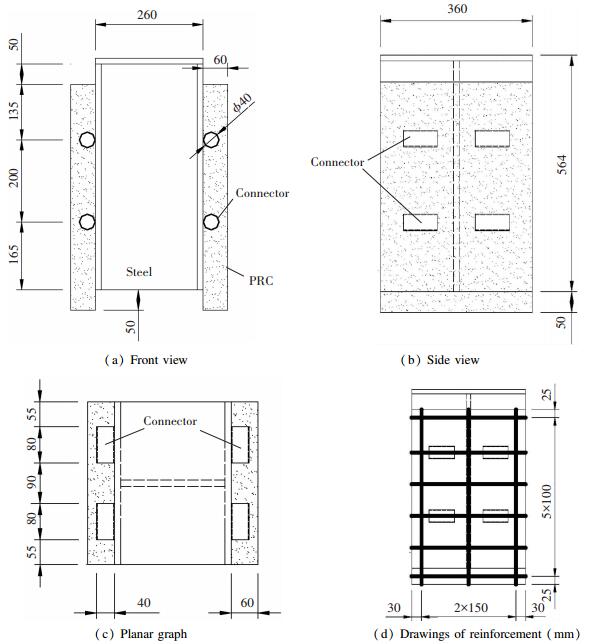 Fig.2 Structural details of specimen
Fig.2 Structural details of specimen 3.2 Production of Specimens 3.2.1 Welding of steel tubular connectors The steel tubular connector was welded on steel plates by a rare kind of welding form. The Canada Standards Association (CSA, W59) in 2003 first defined the weld of a round arch side of a specimen with steel plate surface, as a one-sided bell weld seam[15], and welding was divided into two categories according to the size for the radius of the arc or the thickness of thin-walled hollow tubular wall. The first welding form of steel tubular connectors, with a radius of the arc not larger than 10 mm or a wall thickness not larger than 5 mm, was called the horn-shaped fillet weld, which required a tangent line at the contact point between the weld seam and the arc, to be vertical to the surface of the steel plate. Welding details are shown in Fig. 3(a). The second welding form, when an arc radius was larger than 10 mm, or a wall thickness larger than 5 mm, was called a partial penetration obliquely horn-shaped groove weld. For this kind of welding, a tangent line mentioned above, vertical to the surface of the specimen, was not required, therefore designers could weld within, aligning to or beyond the tangent line of the arc, according to some specific situations. Corresponding details are shown in Fig. 3(b), where W denotes the welding surface width and E denotes the effective weld width. When calculating weld strength, these two parameters have a conversion relationship W = δE, in which parameter δ takes the value according to the different welding processes: 1) electrode manual arc welding, δ = 1.7; 2) other situations like submerged arc welding, flux cored arc welding, gas metal arc welding, δ = 1.5.
Fig.3
 Fig.3 Horn-shaped fillet weld on single edge
Fig.3 Horn-shaped fillet weld on single edge In this paper, the welding of steel tubular connectors took the above second form. As Chinese technical provision 6.1.2 for cold-formed steel structures (GB50018-2002), where the welding of steel tubular connectors and steel plates belong to the single horn-shape weld seam, size of weld shape should not be less than 1.4 times the minimum thickness of a connected plate. The weld schematic diagram is shown below in Fig. 4.
Fig.4
 Fig.4 Schematic diagram for welding between steel tube and steel plate
Fig.4 Schematic diagram for welding between steel tube and steel plate 3.2.2 Making and curing of RPC Grease should be smeared on the surfaces of steel plates and connectors before concrete was poured into the formwork, in order to reduce the interference of friction between two layers. Concrete used in the specimens was made up of RPC with the 3% steel fiber volume ratio[16]. For a high steel fiber volume ratio, suitable for use in the bridge deck, structural toughness and crack resistance of the specimen were enhanced. The mixture ratio of RPC is shown in Table 1[17]. Test material parameters of specimens were as follows: silica contained more than 90% SiO2, of which the particle size was 0.1-0.2 μm; quartz sand which had a particle size smaller than 0.63 mm; the steel fiber had a diameter of 0.18-0.22 mm, where the diameter to length ratio was 50-80, as well as tensile strength was more than 2 850 MPa; water reducing agent was CX-8 poly carboxylic acid, of which the water-reducing rate was not less than 25%. A posterior osmotic method in order was used in the stirring schedule. Firstly, the matrix material was handled by the dry-mixed method, and was then successively mixed with water and the water reducing agent at two procedures in equal installments. At last, the steel fibers were incorporated. After 24 h from casting, RPC treatment system required autoclave curing for 8 h in steam at high temperature of 180 degrees Celsius, and 1.1 MPa in pressure[18] as heat treatment used in bridge construction. RPC is 99.03 MPa in axial compressive strength, 33.24 GPa in elastic modulus, 0.18 in Poisson's ratio.
表 1
0.18 1 0.3 1.2 0.025
Table 1 Mixture ratio of RPC
3.3 Loading Scheme The loading equipment of the test was an electro-hydraulic servo pressure shear tester YJW-10000, which was produced by Shanghai Hua Long Test Instrument Co. Ltd. In order to make loads arrive at the two-flange plates of the I-beam symmetrically to exactly measure ultimate capacity Vu, strip iron cushion blocks of 2 mm in thickness were applied around edges of the bearing top plate for the specimen. The cushion block could transmit the load evenly to the left and right flanges, as well as level the specimen. To avoid an uneven specimen on either side caused by a concrete production error, there was a sand cushion of 2 cm in thickness beneath the RPC layer bottom. Implementation details are shown in Fig. 5. During loading, a monotonic loading method was used in the first two specimens of each group, but the third specimen would be loaded back and forth[19], where the loading process was divided into 7 steps under round-trip loading to reach 70% Vu, then a force control was converted to a displacement control method, followed by the end of loading.
Fig.5
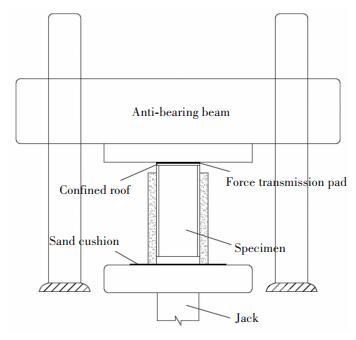 Fig.5 Loading scheme
Fig.5 Loading scheme 3.4 Testing Content and Arrangement of Measuring Points One of the most important parameters for trials was the relative slip measured through arrangement of two displacement gauges, as shown in Figs. 5 and 6. In view of the particularity of high temperature steam curing, researchers did not paste rosette gauges on connectors to obtain strain changes in the course of testing.
Fig.6
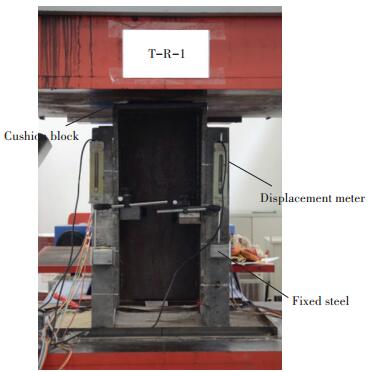 Fig.6 Arrangement of measuring points
Fig.6 Arrangement of measuring points 4 Experimental Phenomena and Analyses 4.1 Test Phenomena of Group T-I For the specimen T-1, as a load reached 705 kN(0.32Vu), the steel-concrete contact interface began to produce a "hissing" sound. When the load was less than 1 000 kN (0.45 Vu), which was at the linear elastic stage, the relative slip value was very small. Following this stage, the specimen remained in an inelastic stage, where the load slowly rose and local RPC under steel tubular connectors entered the compressive station. After the load reached 1 600 kN (0.72Vu) or so, the concrete matrix made a cracking sound, and the slip value began to rise rapidly. As concrete under steel tubes cracked, the outer RPC at the both ends of the tube formed a shear fracture. The last stage of the test was the damage process, where those steel tubular roots, losing constraints, generated large downward displacement, and steel tubular roots, near the weld location, yielded in total sections. With the increase of slip, the lower margin of the steel tube was sheared off. Finally, the steel tubular connector together with inner RPC was pulled out. Experimental phenomena are shown in Fig. 7(a).
Fig.7
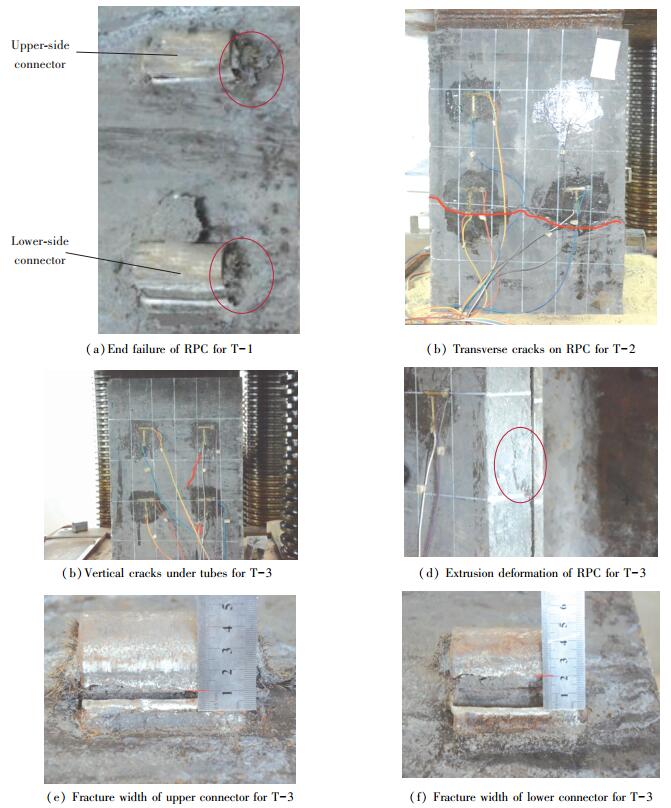 Fig.7 Failure modes of specimens in Group T
Fig.7 Failure modes of specimens in Group T For the specimen T-2, the early loading phenomenon was similar to that of the specimen T-1, with the linear elastic stage appearing before the load reached 1 000 kN (0.47Vu). Subsequently there occurred a longer inelastic stage, which reached ultimate bearing capacity until the relative slip value was about 2.5 mm. In the last loading stage, the right upper-side connector was still bonded to concrete, while the lower-side tubular connector was sheared off and discharged from the concrete, which leaded to transverse cracks next to the lower-side connector, where the sectional stiffness was weak. Corresponding results are shown in Fig. 7(b).
For the specimen T-3, the cyclic loading specimen was loaded to 1 400 kN (0.7Vu). In the late loading stage, it was observed that vertical cracks occurred, due to compression, on concrete under the inferior surface of the steel tube. The crack pattern is shown in Fig. 7(c). At the same time vertical cracks develop on concrete at the root of the steel tube, which were caused by extrusion, as shown in Fig. 7(d). Following completion of loading, shear fracture existed at the lower margin of each connector on the I-steel separated from concrete plates, as shown in Fig. 7(e) and Fig. 7(f). Fracture width at the lower margin of the upper-side connector was about 11 mm, and that of the lower-side connector was about 21 mm. Thus fracture width of the lower connector is significantly larger than that of the upper one, which indicates that, for the specimen with multi-connector, the load transfers from the bottom up.
The process of shear failure for connectors without penetrative bars can be divided into three phases, as shown in Fig. 8. During the elastic phase, as shown in Fig. 8(a), the relative slip is small and RPC works together with the steel tubular connector to resist shear forces. In the inelastic phase, as shown in Fig. 8(b), concrete below the root of steel tubular connector shows plastic deformation and local cracking, which results in gradual bending at the tubular root. The slip grows apparently as the load increases progressively, and capacity reaches the peak value soon afterwards. During the failure phase, as shown in Fig. 8(c), extensive concrete under the tube is crushed, and yielding fracture of total sections at the tubular root occurs. Finally, shear failure of concrete appears at both ends of the tube as well as steel tubular connectors filled with concrete are pulled out.
Fig.8
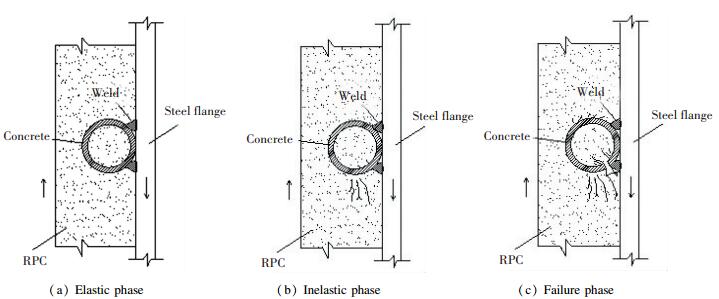 Fig.8 Development mechanism of connectors in Group T
Fig.8 Development mechanism of connectors in Group T 4.2 Test Phenomena of Group T-R-I For the specimen T-R-1, which contained penetrative bars in tubular connectors, before loaded to 1 300 kN (0.7Vu), it remained in the linear-elastic stage with a low slip. Then the specimen entered the inelastic stage and reached its limit capacity when loaded to 1 850 kN. Furthermore, at the failure stage, the loads slowly decreased to 1 700 kN (0.92Vu). For the relative dislocation of connectors and adjacent concrete, diagonal cracks developed on RPC below the steel tubular connector, as shown in Fig. 9(a). Additionally, the specimen, exhibiting superior ductility, was eventually destroyed with the tube sheared off at its root.
Fig.9
 Fig.9 Failure modes of specimens in Group T-R
Fig.9 Failure modes of specimens in Group T-R For the specimen T-R-2, it was loaded to 1 200 kN(0.7Vu), during the inelastic stage. When the load reached 1 550 kN (about 0.9 Vu), RPC crushing in and near the tubular connector made a "banging" sound, which continued until the peak load 1 715 kN. At the failure stage, bearing capacity decreased to 1 610 kN (0.94Vu). Subsequently, vertical cracks of 0.03 mm appeared on concrete around the lower tubular connector as shown in Fig. 9(b). As the shear load decreased to 1 410 kN (0.82Vu), diagonal cracks appeared along the upper tube and developed away from the steel tubular connector.
For the specimen T-R-3, when the load arrived at 1 050 kN (0.6Vu), its slip was noticeable and began to enter the inelastic phase. When the load applied was around 1 500 kN (0.88Vu), transverse cracks occurred on the RPC board. Loaded to a peak value of around 1 650 kN, a lower row of steel tubes was sheared off on one side, and then bearing capacity started to decline. In the loading process, even though the lower margin of the steel tubular connector was cut, the concrete still connected with tubular connectors by inner bars. With a certain slip, interfaces between the steel and concrete were mostly separated, but the steel plate was still linked with RPC by the complete upper margin of tubular connectors. The failure pattern is shown in Fig. 9(c). To obtain more accurate observation of failure modes for connectors, following completion of the test, RPC plates were exactly separated from steel plates through the mechanical method. Therefore, fracture trace can be observed directly and shown in Fig. 9(d) and Fig. 9(e). Furthermore, deformation of steel bars can be attained in Fig. 9(f).
The shear failure of steel tubular connectors with penetrative bars is divided into three phases. At the elastic phase, as shown in Fig. 10(a), tubular connectors, steel bars and inner RPC resist shear forces together. Then during the inelastic phase, as shown in Fig. 10(b), cracks on RPC in or below tubular connectors occur owing to extrusion, and penetrative bars constrain the relative slip between connectors and concrete, thus generating yielding deformation. At the failure phase, concrete in the tube is crushed, leading to plastic deformation of steel tubes along the direction of the radius, as shown in Fig. 10(c), and the tubular connector later becomes distorted, causing shear fracture at its lower margin, with a remarkably declined trend in capacity afterwards. Meanwhile diagonal cracks were prone to occurring around the connectors, and at this phase only hollow steel tubular connectors and inner bars possess the resistance of shear forces.
Fig.10
 Fig.10 Development mechanism of connectors in Group T-R
Fig.10 Development mechanism of connectors in Group T-R In summary, two sets of steel tubular connectors are all sheared off at the lower margins, close to welding, which represents this area under pressure is the weakest part of the connector for resisting forces, and strength of a trumpet-shaped weld meets design requirements.
4.3 Discussions of Test Results 4.3.1 Load - slip curves The measured values of shear load-slip curves for two groups are shown in Fig. 11 (a) and Fig. 11 (b), respectively. A representative curve of each group is taken for comparison in Fig. 11(c), and the following conclusions are drawn:
Fig.11
 Fig.11 Load-slip curves of specimens
Fig.11 Load-slip curves of specimens 1) Referring to Fig. 11(a), in the loading process of Group T, short linear elastic segments exist on the curve, which quickly turn into nonlinear rise phases, and a small amount of plastic deformation can be found on the test piece. As the slip grows faster, the curve exhibits an inflection point, and material at the lower edge of the tube near welding has yielded. However, there are no dramatic differences among load-slip curves of the cyclic loading specimen and monotonic loading specimen.
2) Referring to Fig. 11(b), for Group T-R, curves show a smaller discreteness during the early stages of loading, and there are some differences when it comes to the bearing capacity in the later stage of loading. Nevertheless, varied curves display very similar results in downward trends, where capacity declined slowly.
3) Comparison of specimens in two groups manifests that, referring to Fig. 11(c), shear stiffness of the connector has a slight drop, as penetrative bars are arranged in steel tubular connectors, and bearing capacity correspondingly shows a considerable decrease. Moreover the curve of the specimen with steel bars declines more slowly, indicating that ductility has been improved.
4.3.2 Working mechanism of steel tubular connectors The working mechanisms of specimens with penetrative bars are plainly different from counterparts. For steel tubular connectors without bars, the dowel action of RPC in the tube provides effective shear and tensile resistance at the interface, and for steel tubular connectors with penetrative bars, RPC between steel tubes and bars can be crushed easily, with the effect of the dowel action on the tubular concrete not much remarkable. Thus, during the late period of loading, the shear contribution mainly derives from hollow tubes and bars, which results in a lower capacity, but obtains better structural ductility.
4.3.3 Results of the parameter discussions A typical load-slip curve is shown in Fig. 12, where Vu denotes the ultimate capacity; Su denotes the slip corresponding to the ultimate bearing capacity; Vy is yielding capacity related to the elastic limit point in the load-slip curve; Sy is slip at the yield point, and the initial elastic shear stiffness K equals to a secant slope at the point of 1/3 ultimate capacity. Ductility represents the deformability of connectors, which is mainly reflected in the plastic rising stage and failure stage of the curve. The ductility coefficient μ= Sm/Sy, in which Sm is the slip value corresponding to the 0.85Vu at a descending segment existing, or a maximum slip in a load-slip curve is taken when the curve does not consist of a declining segment or that segment does not reach the 0.85Vu[20].
Fig.12
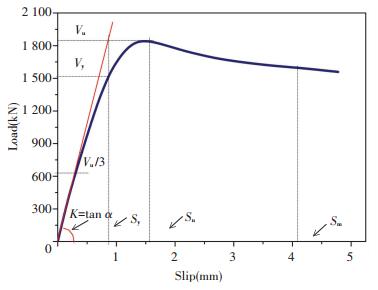 Fig.12 Typical load-slip curve
Fig.12 Typical load-slip curve From Table 2, it is analyzed that shear capacity of the specimen with penetrative bars decreases by about 20%, compared with that of the specimen without bars. Meanwhile, the yield shear force decreases by around 21.4%, and in the elastic phase, the shear stiffness of composite structure with penetrative bars decreases by roughly 8.6%. In addition, ductility of steel tubular connectors with steel bars increases plainly. On account of reinforcement, the ductility coefficient is 1.75 times as large. Besides, for specimens in two groups, average ductility coefficients are more than 3.5, which manifests that the steel tubular connector possesses certain deformation capacity. For specimens with penetrative bars, RPC between the tube wall and the steel bar has been crushed during loading, so the dowel action of the concrete in the tube has not been fully played. In the later period, the shear capacity stems from steel tubes in a hollow state and steel bars in tubes, causing that ultimate capacity is apparently lower than that of the specimen without steel bars, and about 80% bearing capacity of the latter. Therefore, shear stiffness also reduces to a certain extent for tubes in a hollow situation, and ductility, attributing to steel bars with excellent ductile capacity, gets improvement. In view of the test program and theoretical analysis, to achieve structural full potential, length of the tube connector, ranging from 40 mm to 80 mm, is recommended for application in practical engineering.
表 2
T T-1
T-2
T-3 2 238
2 109
2 272 2 206 1 914
1 790
2 025 1 910 3 043
2 637
2 610 2 763 3.50
3.48
3.62 3.53
T-R T-R-1
T-R-2
T-R-3 1 866
1 715
1 694 1 758 1 566
1 484
1 450 1 500 2 521
2 302
2 750 2 524 6.01
6.35
6.21 6.19
Table 2 Test parameter results for specimens in each group
5 Conclusions 1) For the composite deck reinforced by steel tubular connectors without steel bars, plastic deformation and local cracks occur on concrete below the roots of steel tubes owing to the action of interfacial shear. At the same time, the root of the tubular connector begins to yield gradually. As the slip increases, more concrete under the steel tube is crushed, and the root section of the tube is also sheared off. Finally, shear failure of concrete appears at both ends of the tube, and steel tubular connectors filled with concrete are pulled out.
2) For the composite deck with penetrative steel bars, plastic deformation and cracks firstly occur on concrete in and below the steel tube under interfacial shear forces, which makes room forradial deformation of the tube. Additionally, steel bars can prevent relative slip between the steel tube and concrete, thus generating yielding deformation. With the increase of slip, inner and outer RPC of the tube are both crushed, with shear fracture occurring on the lower margin at the tube.
3) Shear capacity of the specimen with penetrative bars decreases by about 20%, compared with that of the specimen without bars. Meanwhile, the yield shear force decreases by around 21.4%, and shear stiffness of composite structure with penetrative bars decreases by roughly 8.6%. Based on effect of reinforcement, the ductility coefficient is 1.75 times as large. Besides, for specimens in two groups, average ductility coefficients are more than 3.5, which manifests that the steel tubular connector possesses certain deformation capacity.
4) The failure mode in two groups is shear fracture existing at the lower margin of the tubular connector close to welding, demonstrating this area is the weakest part of the connector for resisting shear forces.
5) For one specimen, evident differences in deformation are observed between the upper and lower row of the connector.Hence uneven distribution of stress on the connector should be considered in utilization. Furthermore, in view of the test program and theoretical analysis, to achieve structural full potential, length of the tube connector, ranging from 40 mm to 80 mm, is recommended for application in practical engineering.
References
[1] Jia X, Huang B, Chen S, et al. Comparative investigation into field performance of steel bridge deck asphalt overlay systems. KSCE Journal of Civil Engineering, 2016, 20(7): 1-10. DOI:10.1007/s12205-016-0259-1 (
 0)
0)[2] Al-Deen S, Ranzi G, Uy B. Non-uniform shrinkage in imply-supported composite steel-concrete slabs. Steel & Composite Structures, 2015, 18(2): 375-394. DOI:10.12989/scs.2015.18.2.375 (
 0)
0)[3] Kim W B, Choi B J. Shear strength of connections between open and closed steel-concrete composite sandwich structures. Steel & Composite Structures, 2011, 11(2): 22-42. DOI:10.12989/scs.2011.11.2.169 (
 0)
0)[4] Lu P Z, Cheng L F, Li Y, et al. Study on mechanical behavior of negative bending region based design of composite bridge deck. International Journal of Civil Engineering, 2017(3): 1-9. DOI:10.1007/s40999-017-0156-0 (
 0)
0)[5] Hamoda A, Hossain K M A, Sennah K, et al. Behaviour of composite high performance concrete slab on steel I-beams subjected to static hogging moment. Engineering Structures, 2017, 140: 51-65. DOI:10.1016/j.engstruct.2017.02.030 (
 0)
0)[6] Shao Xudong, Chen Bin, Zhou Xuhong. Experiment on bending behavior of wet joints in light-weighted composite deck system composed of steel and RPC layer. China Journal of Highway and Transport, 2017, 30(3): 210-217. (in Chinese) DOI:10.19721/j.cnki.1001-7372.2017.03.023 (
 0)
0)[7] Cao J, Shao X, Zhang Z, et al. Retrofit of an orthotropic steel deck with compact reinforced reactive powder concrete. Structure & Infrastructure Engineering, 2016, 12(3): 411-429. DOI:10.1080/15732479.2015.1019894 (
 0)
0)[8] Mohammed T J, Abu B H, Bunnori N M. Strengthening of reinforced concrete beams subjected to torsion with UHPFC composites. Structural Engineering and Mechanics, 2015, 56(1): 123-136. DOI:10.12989/sem.2015.56.1.123 (
 0)
0)[9] Xin Haohui, Liu Yuqing, Du Ao. Thermal analysis on composite girder with hybrid GFRP-concrete deck. Steel & Composite Structures, 2015, 19(5). DOI:10.12989/scs.2015.19.5.1221 (
 0)
0)[10] Kandasamy S, Akila P. Experimental analysis and modeling of steel fiber reinforced SCC using central composite design. Computers and Concrete, 2015, 15(2): 215-229. DOI:10.12989/cac.2015.15.2.215 (
 0)
0)[11] Chen Baochun, Ji Tao, Huang Qingwei. Review of research on ultra-high performance concrete. Journal of Architecture and Civil Engineering, 2014, 31(3): 1-24. (in Chinese) DOI:10.3969/j.issn.1673-2049.2014.03.002 (
 0)
0)[12] Shao Xudong, Zhou Huanyu, Cao Junhui. Shear performance of studs in steel-thin RPC composite deck structures. Journal of Highway and Transportation Research and Development, 2013, 4: 34-39. (in Chinese) DOI:10.3969/j.issn.1002-0268.2013.04.007 (
 0)
0)[13] Zhao Qiu, Cai Wenping, Chen Baochun. Shear performance of steel and RPC composite deck with smooth plate shear connector. Journal of Chang'an University, 2017, 37(2): 64-72. (in Chinese) DOI:10.19721/j.cnki.1671-8879.2017.02.008 (
 0)
0)[14] CEN. 1994-4-4 Eurocode 4: Design of composite steel and concrete structures. Part 1-1: General rules and rules for buildings. 2004. (
 0)
0)[15] Packer J A, Frater G S. Recommended effective throat sizes for flare groove welds to HSS. Engineering Journal, 2005, 1: 31-44. (
 0)
0)[16] Zhao Qiu, Cai Wenping, Chen Baochun. Shear-test research on smooth-plate shear-force connector of steel and RPC composite deck. Engineering Mechanics, 2017, 34(8): 171-179. (in Chinese) DOI:10.6052/j.issn.1000-4750.2016.04.0326 (
 0)
0)[17] Du Renyuan, Chen Baochun. Experimental research on the ultimate load capacity of reactive powder concrete arches. Engineering Mechanics, 2012, 30(5): 42-48. (in Chinese) DOI:10.6052/j.issn.1000-4750.2011.11.0783 (
 0)
0)[18] Zdeb T. Ultra-high performance concrete - properties and technology. Bulletin of the Polish Academy of Sciences Technical Sciences, 2013, 61(1): 183-193. DOI:10.2478/bpasts-2013-0017 (
 0)
0)[19] Huang Fuyun, Yu Xinmeng, Chen Baochun. The structural performance of axially loaded CFST columns under various loading conditions. Steel & Composite Structures, 2012, 13(5): 451-471. DOI:10.12989/scs.2012.13.5.451 (
 0)
0)[20] Ding Min, Xue Weichen, Wang Hua. Experiment on stud shear connectors in steel-high performance concrete composite beams. Industrial Construction, 2007, 37(8): 9-13. (in Chinese) DOI:10.13204/j.gyjz2007.08.003 (
 0)
0)